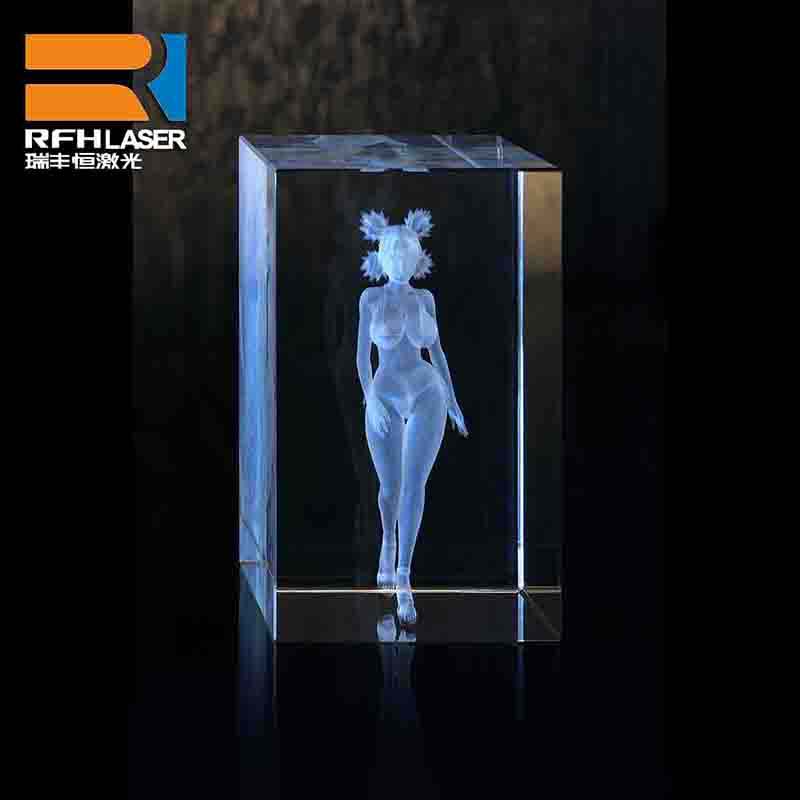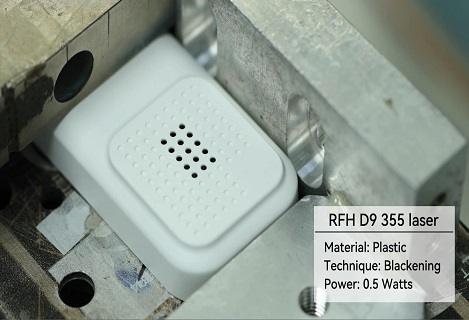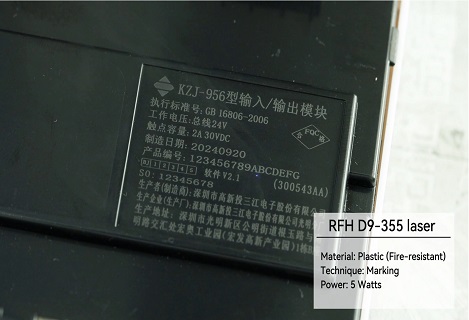
green lasers for 3D subsurface engraving

You have probably seen those cool crystal cubes that have super detailed 3D engraved images (a car, a horse, a flower, a logo, etc.) magically “floating” inside. If you have, you’ve no doubt picked it up for a closer look and wondered, “Wow! How on earth did they do that?”
These attention-grabbing pieces are often sold at tourist destinations as souvenirs, as well as for out-of-the-ordinary gifts and awards that people can display on their desk, mantle, shelf, etc. Perhaps you have even seen companies that can take a 3D photograph of someone and engrave that photo inside a piece of crystal with beautiful clarity and amazing detail.
The process is called “3D subsurface laser engraving,” and it is a super cool technology that you really don’t hear a lot about. Well, we are about to talk about it, and even tell you where you can buy the equipment if you are so inclined.
Subsurface crystal engraving is nothing new. It’s been around for a long time, but it has to be one of the least used and least understood techniques in the engraving world. It brings myriad opportunities to the engraver and the customer alike, but there are some stumbling blocks keeping it from being more common than it is.
It all began in 1987 with a Russian scientist, Prof. M.J. Soileau, but the technology was so expensive it didn’t gain much traction. In the early 2000s, however, the Chinese took the technology to a new level with machines that, although still expensive, were far less expensive than the Russian lasers.
First, let’s understand what is meant by subsurface crystal engraving. There are actually several names for the technology. Subsurface laser engraving (SSLE) is the most professional sounding and probably the most commonly used, but there are others. The one that made me scratch my head the most was “bubblegram.” If you try to search for subsurface engraving in Wikipedia, look for bubblegram. There, you will learn that it gets its name from the shape of the tiny fractures the laser makes in the glass—they look like bubbles floating inside the crystal. These tiny bubble-like fractures are positioned inside the crystal so as to create a three-dimensional image of the graphics you are reproducing.
Another really scientific sounding name for this is “volumetric display” but don’t expect anyone to know what you are talking about if you use that term. As I explain what is going on within this technology, however, you will come to understand the term.
To make all this work, we need a “green” laser. Like a fiber laser, these are solid state, pulsed lasers but green lasers work at a wavelength of 532nm (nanometers) as compared to a fiber laser with a wavelength of 1062nm (about twice as long as a green laser) or a CO2 with a wavelength of 9.4-10.6µm (micrometers), or 10,600nm, which is substantially longer yet. This illustrates the uniqueness of a green laser compared to the lasers most of us have.
You are probably a little familiar with green lasers. Many of the laser pointers sold on Amazon or eBay are green lasers. Of course, they are very low power, nothing near what is needed for engraving glass. You might have heard about green lasers in relation to those that have been used to blind airline pilots. Even low power lasers travel for miles if unobstructed, and some planes have nearly been brought down by someone on the ground pointing a green laser at a passing airliner. Green lasers are also used in concert visuals and fireworks displays to create images in midair such as an eagle flapping its wings or an American flag waving in the breeze.
Green lasers are also used in medical procedures of various kinds, including MRI scans, but I mention that only as a bit of information since we are unlikely to ever cross paths with anything other than the business end of those lasers.





































